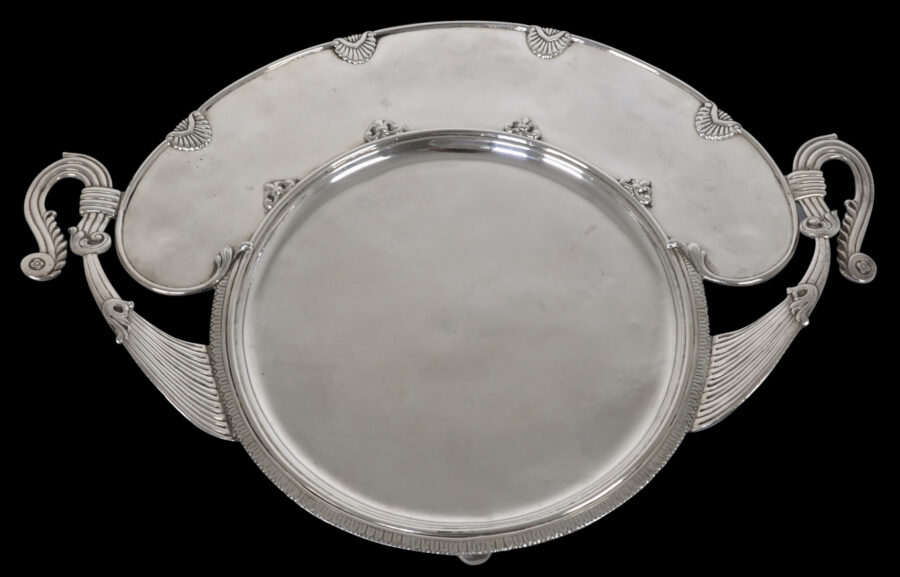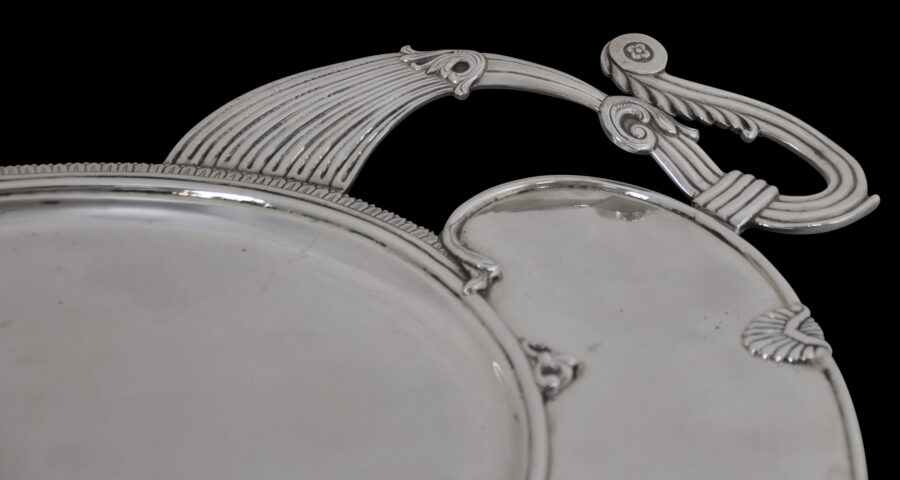This rather extraordinary and large highly-polished, silver tray seems to be without precedent. It is of high-grade silver and seems to have been designed as a serving tray – perhaps for household staff to offer guests both a glass and a canape. It is of thick, high-grade, solid silver.
It comprises two dramatic raised side handles decorated with rococo-like scrolls and shell motifs; a large central, round well partly surrounded by a rim worked with lotus petal motifs (this is where the glasses might have stood); and a front arc-like platform decorated in high relief with solid applique plaques in fleur-de-lys and scallop form. The tray stands on four large ball feet.
Where is the tray from? There are two hints as to a possible origin. The tray is impressed on the reverse with an indistinct maker’s mark and engraved with numbers in Telugu script. The presence of Telugu suggests South Indian provenance and manufacture. The use of the fleur-de-lys suggests a possible French connection. Together, these two elements suggests that the tray might have come from the French colonial enclave in South India, Pondicherry. The quality of the tray and its use for serving at high-level functions might even suggest a vice-regal (or quasi vice-regal)provenance. (Certainly, the fleur-de-lys had been a symbol of the French monarchy.)
Telugu is a Dravidian language spoken mainly in the southern Indian state of Andhra Pradesh but other southern states also have significant numbers of Telugu speakers.
The tray has the form of a scallop mollusc without its shell and with the roe still attached. Perhaps the platter was intended to serve scallops and champagne at diplomatic functions? It is all conjecture, but the tray is very unusual and highly sculptural. It is in excellent condition.









